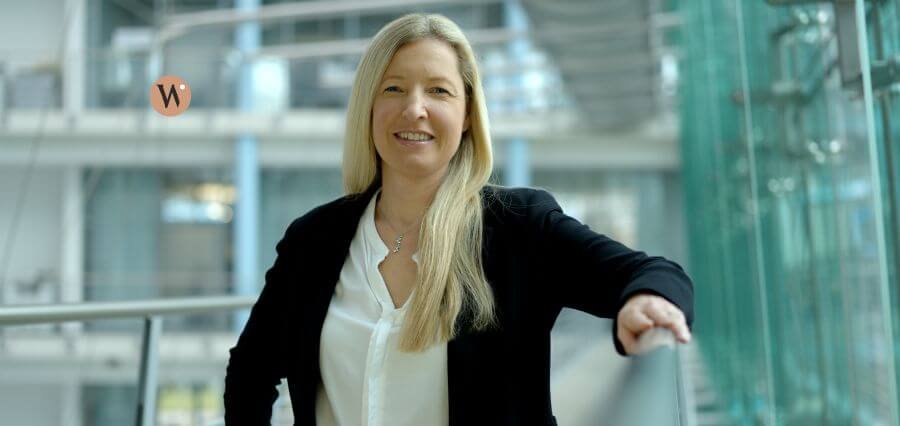Future of Biotech!
Biotechnology has emerged as a key discipline in scientific and industrial advancements, offering advanced solutions in medicine, agriculture, and environmental sustainability. By harnessing biological processes, researchers and engineers develop new pharmaceuticals, innovative materials, and sustainable alternatives to fossil-based resources. Over the years, advances in DNA sequencing, artificial intelligence, and synthetic biology have revolutionized how biological systems are studied and modified. This shift has enabled scientists to engineer cells that produce biofuels, bioplastics, and industrial chemicals with a reduced environmental footprint. However, despite these technological strides, challenges remain in optimizing costs. Therefore, automation technology is essential in implementing these processes on an industrial scale, enhancing efficiency, and finally making large-scale production viable to integrate these advancements into mainstream industrial applications.
Dr. Nina Gaissert, Referent Portfolio Projects, has dedicated her career to bridging biology and technology, accelerating research findings transition into real-world applications. With a keen interest in bio-inspired engineering and sustainable solutions, she has been crucial in exploring automation’s role in biotechnology. Her work reflects a deep commitment to nurturing collaboration between researchers, engineers, and industry professionals to drive meaningful innovation. By combining scientific expertise with a strategic vision, she analyzes industry trends and identifies opportunities where automation can enhance biotech applications. Her leadership is marked by an ability to synthesize intricate information, foresee industry needs, and guide the development of technologies contributing to sustainability and efficiency.
Festo, has been at the head of integrating biology with automation. The company has developed innovative solutions such as bionic learning projects and bioreactor technologies that capture atmospheric CO₂ and convert it into valuable materials. The company collaborates with universities, research institutions, and industry leaders to create solutions that enhance industrial efficiency while reducing environmental impact. Automation technology can shape the future of industrial biotechnology by transforming scientific discoveries into practical, scalable solutions.
Let’s explore Dr. Gaissert’s innovative strategies for advancing Biotech:
A Journey through Science and Innovation
Dr. Gaissert grew up in southern Germany, where she developed a deep interest in mathematics, science, and biology during high school. She became fascinated by the potential of combining biology with technology to shape the future of human life. This passion led her to pursue a degree in Technical Biology at the University of Stuttgart, where she explored how biological systems can be integrated into industrial processes to produce medicines and other valuable products efficiently.
She completed her bachelor’s thesis at MIT, MA, USA. For her diploma thesis, she designed a bioreactor that utilized biofilms to remove toxic chemicals from the air. Throughout her studies, she was awarded a scholarship from the German Industry.
Dr. Gaissert continued her academic journey with a PhD at the Max Planck Institute for Biological Cybernetics in Tübingen, Germany; following her PhD, she spent time as a postdoctoral researcher in Seoul, South Korea, where she developed 3D-printed models inspired by natural growth patterns and programmed robotic systems for experimental analysis.
She later transitioned into industry, joining Festo, a globally recognized company specializing in automation technology. She was part of the Bionic Learning Network for six years, a collaborative initiative involving universities, research institutions, startups, and various Festo research departments. The team explored nature-inspired engineering solutions, creating robotic systems mimicking ants, kangaroos, and flying dragonflies. These projects applied principles refined by nature over millions of years, focusing on energy efficiency, lightweight structures, and cooperative behaviors such as swarm intelligence.
Taking advantage of Germany’s parental leave policies, Dr. Gaissert moved to Vancouver, Canada, Upon returning to work, she rejoined Festo’s biotech research division, contributing to projects that capture atmospheric CO₂ and convert it into sustainable industrial materials, such as eco-friendly dyes and climate-neutral plastics.
The Role of Automation in Advancing Biotech
Dr. Gaissert reflects that biology has been a field of exploration for centuries. DNA was first identified in Tübingen, Germany, in 1869, marking a breakthrough that paved the way for numerous discoveries. The impact of biological advancements on human life has been profound—one notable example being Alexander Fleming’s discovery of Penicillin in 1928. Since then, antibiotics, vaccines, and treatments such as insulin have reshaped medicine, agriculture, and environmental sciences, improving health and longevity.
Recent progress in DNA sequencing, artificial intelligence, and data analysis has allowed scientists to gain deeper insights into cellular functions. Synthetic Biology now enables researchers to simulate biochemical pathways digitally, while tools like CRISPR-Cas9 provide precise methods to alter cells for specific purposes.
This progress has transformed biology into an engineering driven discipline, where cells can be tailored to generate essential materials—from biofuels and biodegradable plastics to industrial chemicals and nutritional products. These innovations rely on renewable sources, making them more environmentally sustainable.
Despite the promise of these advancements, production processes often remain costly. Automation technology enhances efficiency by reducing processing times, minimizing downtime in production facilities, and increasing economic viability. Additionally, automated screening of natural cells accelerates the discovery of novel treatments, opening new possibilities for combating diseases.
Advancing Sustainable Solutions through Bioeconomy
Dr. Gaissert has recently taken a more profound interest in the field of bioeconomy, which focuses on utilizing biological processes to create environmentally friendly industrial products. This approach prioritizes renewable materials over fossil-based resources, making it possible to develop bioplastics with lower environmental impact. These materials offer two key benefits: they do not contribute to carbon emissions, helping to mitigate climate change, and they can break down naturally, reducing the accumulation of microplastics in marine ecosystems.
However, the bioeconomy extends beyond plastic alternatives. Waste streams such as sewage water can serve as a source for producing green hydrogen. Additionally, valuable elements like nitrogen can be extracted to create eco-friendly fertilizers, promoting sustainable agricultural practices.
The most effective bioeconomy applications involve repurposing waste into valuable raw materials and shifting industries from disposable systems to regenerative ones. Dr. Gaissert is currently engaged in portfolio management, analyzing the growing sector of bioeconomy to identify technical requirements and ensure automation technologies contribute to making circular solutions economically viable.
Merging Biology and Technology
Dr. Gaissert believes as biology and technology converge, new career opportunities will emerge. The world will require well-educated youth with innovative ideas and ambition, blending knowledge from both fields. Festo welcomes school groups to explore the company. Additionally, a children’s book on bionics was published to spark curiosity about technology among young learners.
Bionics and bio-inspired design is an excellent introduction since it is visually engaging and appealing even to those not initially drawn to technical subjects. Furthermore, Festo has created Bionics4Education, educational kits for schools and colleges to support this. These kits enable students to explore mechanics, electronics, software, and biology engagingly. The “Bionics for Education” initiative provides a hands-on learning experience for students, merging technology, biology, and computer science.
Teaching and Innovating for a Greener Future
Nina is deeply committed to educating and inspiring the next generation, as they hold the key to shaping the world ahead. To contribute to this cause, she accepted a professorship at Ohm University (Technische Hochschule Nürnberg Georg Simon Ohm), where she teaches bionics and explores bio-inspired technological advancements.
Collaborating with her students, she recently developed an innovative design to harness renewable energy from rivers. Unlike traditional hydropower, which disrupts ecosystems and biodiversity, their approach utilizes small water turbines. These turbines minimize environmental impact while generating electricity for smart devices and other technological uses.
Bringing Research Ideas to the Market
Nina is convinced that innovations at the intersection of biology and technology will improve humans’ lives and change the future. Due to demographic changes, the global population is growing, and there are more and more senior people on this planet. Many essential resources are limited, and the use of fossil resources leads to climate change.
With the latest breakthroughs in BioTech, food can be provided for millions, new medicines can be developed, and people can stay healthy longer. Limited resources can be substituted, and chemicals and industrial resources can be produced in a climate-friendly fashion. In Portfolio Management, Nina can help take ideas from research and bring them to the market because only then will they have an impact.
Bridging Research and Practical Solutions
With six years of experience in the bionics sector, Dr. Gaissert has dedicated her career to drawing inspiration from nature to drive technological advancements for industrial applications. Over the past two years, her focus has shifted toward research, where she has contributed to projects like Festo’s PhotoBionicCell and BionicCellFactory. These initiatives explore the industrial potential of microorganisms, mainly algae, which absorb CO₂ from the air and convert it into valuable byproducts.
Festo envisions immense opportunities in integrating biology with technology, and her current role involves analyzing what this emerging field might evolve into. Her objective is to anticipate the needs of future industries and determine the automation solutions Festo should develop to support these advancements.
Achieving this requires extensive collaboration—not only with research institutions but also with emerging entities in this evolving sector. Understanding existing capabilities, identifying gaps, and foreseeing future demands are central to her approach. Additionally, pinpointing challenges in product development allows her to explore potential solutions.
Given the increasing intricacy of industrial processes, interdisciplinary teamwork is essential. Beyond biologists, expertise from engineers and data scientists is required to facilitate seamless integration. She aims to bring these experts together and develop a shared understanding.
What excites her most about her work is the opportunity to contribute to shaping a more sustainable future through innovation. Festo has a longstanding tradition of driving technological progress, and her projects play a direct role in continuing this legacy.
Effective Communication in Science and Engineering
Her academic journey began with a strong foundation in biology, which she later expanded by acquiring technical expertise. Studying technical biology at the University of Stuttgart required her to develop scientific and engineering fundamentals to explore integrating biological principles into technological applications.
One of the key challenges she encountered was the distinct separation between these two fields. Biologists and engineers often approach problems differently, making it necessary to learn both perspectives and act as a bridge between them. This required continuous learning and effective communication. Even in daily professional life, differing viewpoints and occasional misunderstandings can make it challenging to advance ideas, even when they hold great potential. Engaging in open discussions and maintaining confidence in one’s knowledge is essential for progress.
Dr. Gaissert highlights that she does not have her team and needs to work with people from product development of different technologies and biology scientists. Everyone comes with their own expert knowledge and expert vocabulary. Here, they have to find a common language to work together.
Integrating Diverse Expertise
Effective Communication of Research Insights
She works with researchers from various universities worldwide, attends conferences, and engages with experts. One of her strengths is her ability to simplify gathered information so that technical colleagues and decision makers can understand and utilize it. Nina highlights that sometimes information can be overwhelming, like a massive mountain in front, but if problems are broken down into little steps, one can start climbing the mountain step by step and finally reach the top.
Positive Outlook for the Future
Nina encourages young individuals to adopt an optimistic perspective on the future. She highlights the emergence of new advancements that will support sustainability, improve health, and create stable employment opportunities.
Dr. Gaissert reflects, “I urge all young people to be confident about what lies ahead. Society faces major obstacles, including climate change, conflict, and pandemics. Finding solutions is essential, and maintaining a constructive attitude is key.
Dr. Gaissert shares, “By harnessing biology, we can create sustainable solutions, conserve resources, safeguard the climate, support a circular economy, and enhance human well-being. For those who remain curious, there is always more to explore. “
Read also : Reshaping Healthcare: Unpacking the Drivers of Healthtech Transformation




